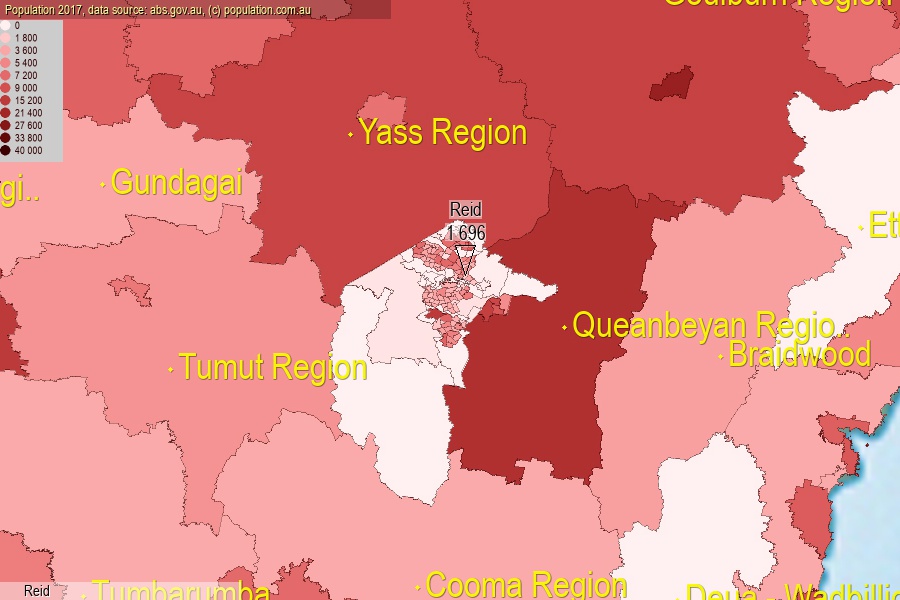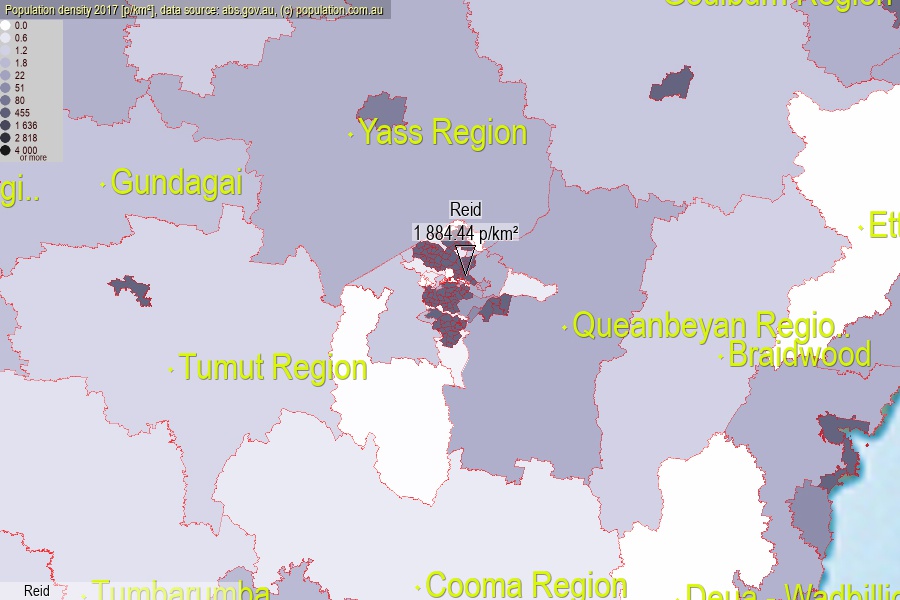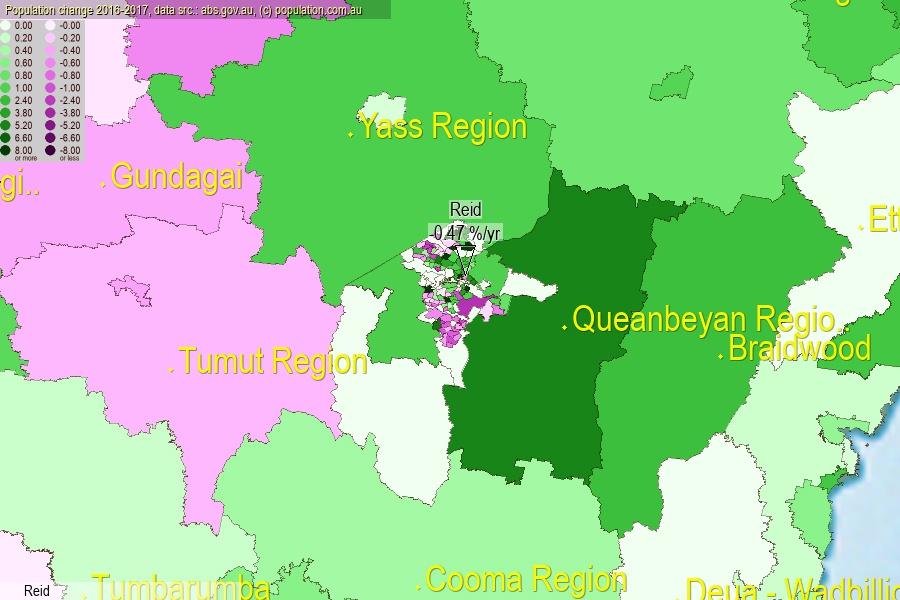 population.com.au
population.com.auLast official estimated population of Reid (as Statistical Area Level 2) was 1 696 people (on 2017-06-30)[2]. This was 0.01% of total Australian population and 0.405% of ACT population. Area of Reid is 0.90 km², in this year population density was 1 884.44 p/km² . If population growth rate would be same as in period 2016-2017 (-0.47%/yr), Reid population in 2025 would be 1 633. [0]



Click to enlarge. Reid is located in the center of the images.
Population [people], population density [p./km²] and population change [%/year] [2]
View borders » (new window) [4]
[2001-2002] +0.57 %/Yr.
[2002-2003] +0.50 %/Yr.
[2003-2004] +1.37 %/Yr.
[2004-2005] +1.54 %/Yr.
[2005-2006] +1.58 %/Yr.
[2006-2007] -0.30 %/Yr.
[2007-2008] -0.78 %/Yr.
[2008-2009] -0.97 %/Yr.
[2009-2010] -0.12 %/Yr.
[2010-2011] +0.06 %/Yr.
[2011-2012] -0.85 %/Yr.
[2012-2013] -0.80 %/Yr.
[2013-2014] +5.15 %/Yr.
[2014-2015] +0.83 %/Yr.
[2015-2016] -0.35 %/Yr.
[2016-2017] -0.47 %/Yr.
[0] Calculated with linear interpolation from officially estimated population
[1] Read more about SA2 and Australian Statistical Geography Standard (ASGS) on abs.gov.au
[2] Population data from Australian Bureau of Statistics (Population and density: 2017; change: 2016-2017)
[3] Digital Boundaries: Australian Statistical Geography Standard (ASGS) 2016.
[4] Border coordinates are simplifyed using Ramer-Douglas-Peucker algorithm.